01:01
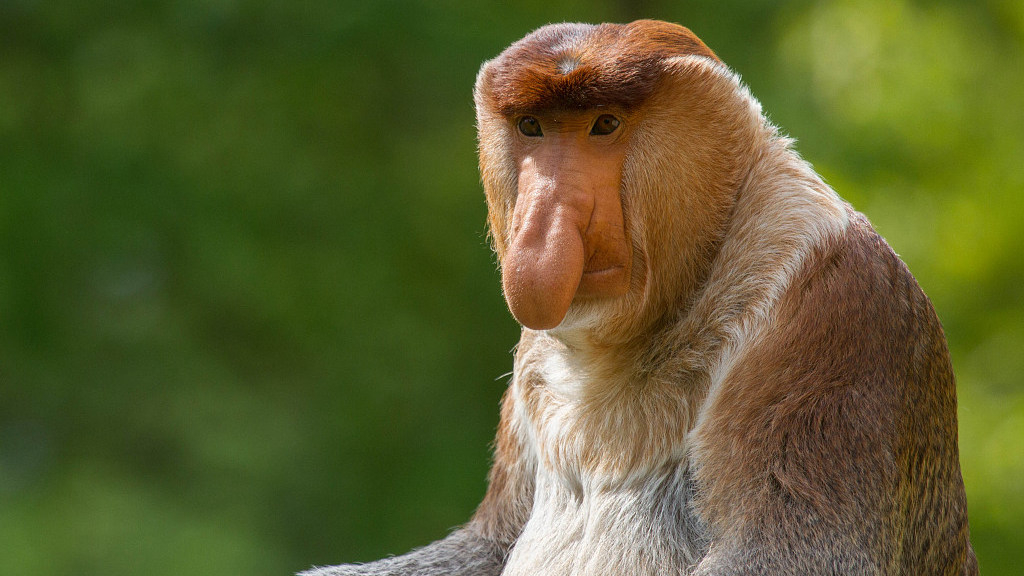
When you look at a proboscis monkey, it's hard to overlook its funny-looking nose. It's big, dangling and fleshy. The schnozzle is of such epic proportions that the whole species was named after it.
The monkeys, native to the Island of Borneo in Southeast Asia, have the biggest nose among all primates. They live in the jungles on the island and are exclusively arboreal, meaning that they spend most of their time on trees.
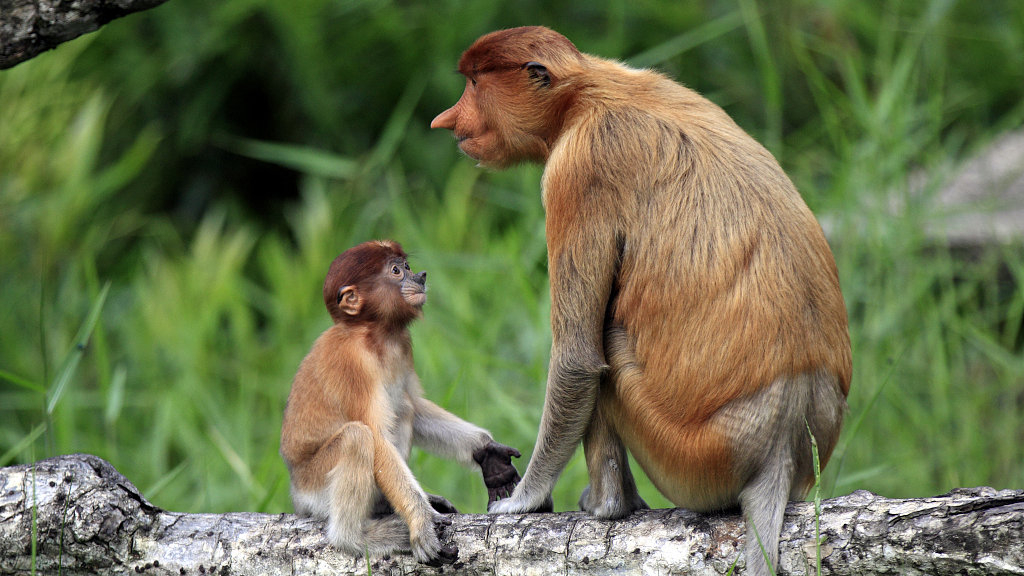
A female proboscis monkey and her infant. /VCG Photo
A female proboscis monkey and her infant. /VCG Photo

A female proboscis monkey and her infant. /VCG Photo
A female proboscis monkey and her infant. /VCG Photo
Proboscis monkeys are one of the largest monkeys in Asia. Males can grow up to 76 centimeters in height while females around 60 centimeters. Continent-wide, only the Tibetan macaques in southwest China can rival their sizes.
Like other primates, monkeys live in harem groups with one dominant male and two to seven females and their offspring.
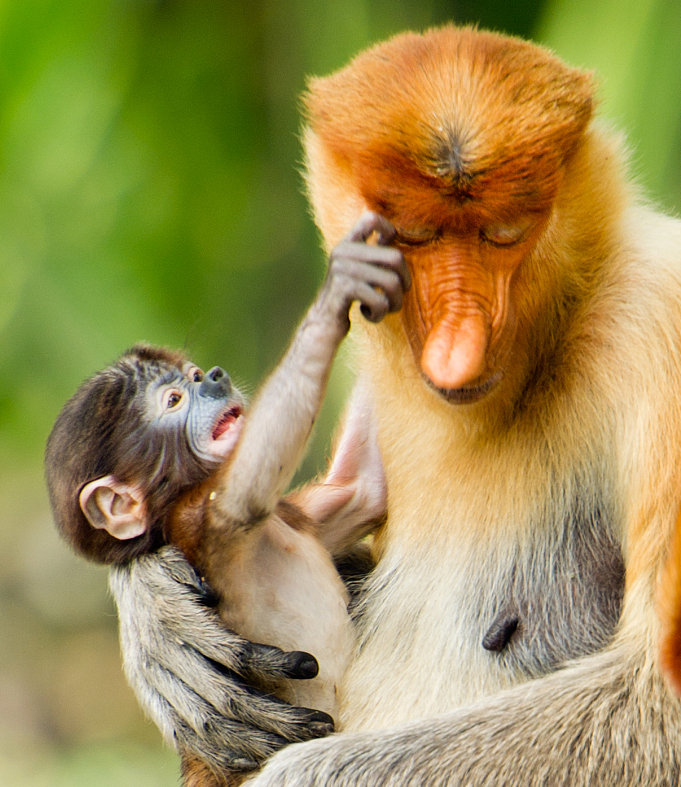
Infant proboscis monkey plays with its mother's eye. /VCG Photo
Infant proboscis monkey plays with its mother's eye. /VCG Photo
Proboscis monkeys display sexual dimorphism, which means that the two sexes exhibit different characteristics beyond the differences in their sexual organs. Males have large pendulous noses hanging lower than their mouth and sometimes exceeding 10.2 centimeters. Females have much smaller noses but are still quite large for primates.
Some have hypothesized that the long noses of males might be the result of sexual selection. Bigger noses lead to louder calls, which is what female monkeys prefer.
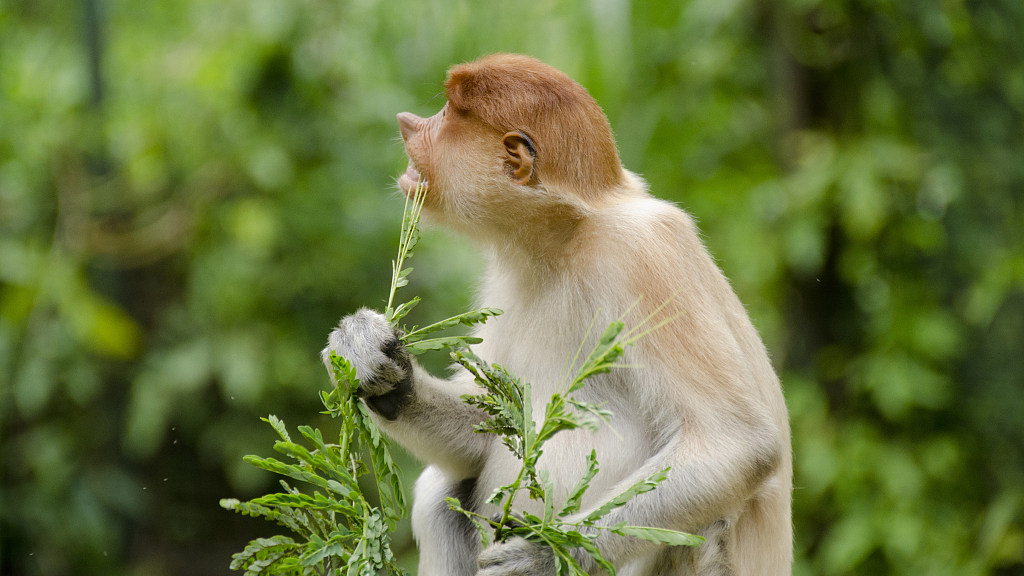
A female monkey eats leaves. /VCG Photo
A female monkey eats leaves. /VCG Photo

A female monkey jumps between tree branches. /VCG Photo
A female monkey jumps between tree branches. /VCG Photo
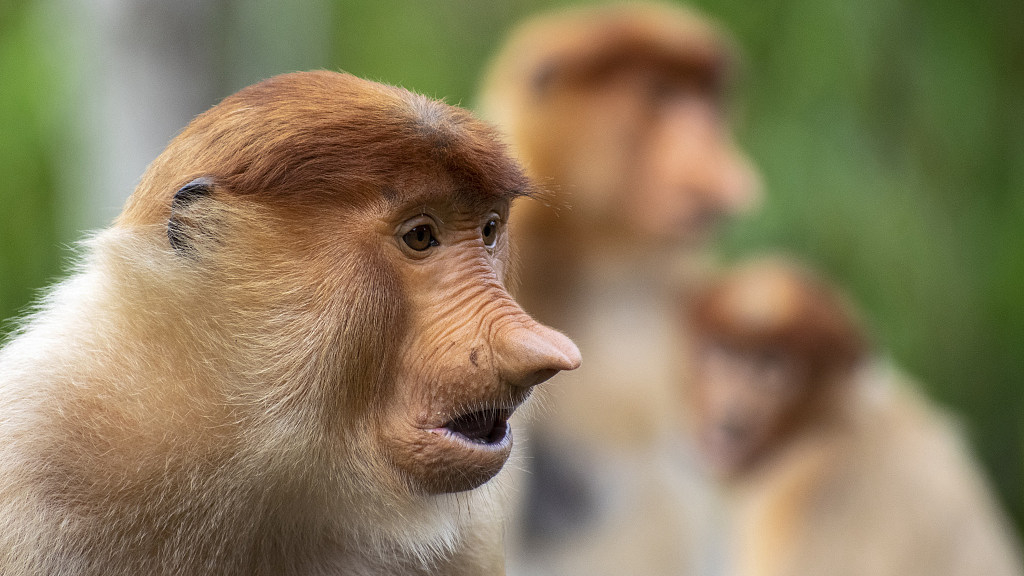
The female proboscis monkey has a shorter and smaller nose than its male counterpart. /VCG Photo
The female proboscis monkey has a shorter and smaller nose than its male counterpart. /VCG Photo
However, both sexes of the proboscis monkeys have big bulging stomachs which give them "pot bellies". Their main diet consists of fruits and leaves. They also eat flowers, seeds or insects in some cases.
An interesting fact about the monkey is that in Indonesian language, it is called the "Dutch monkey" or "Dutchman" because the Indonesians thought that the Dutch colonizers often had similarly large bellies and noses.
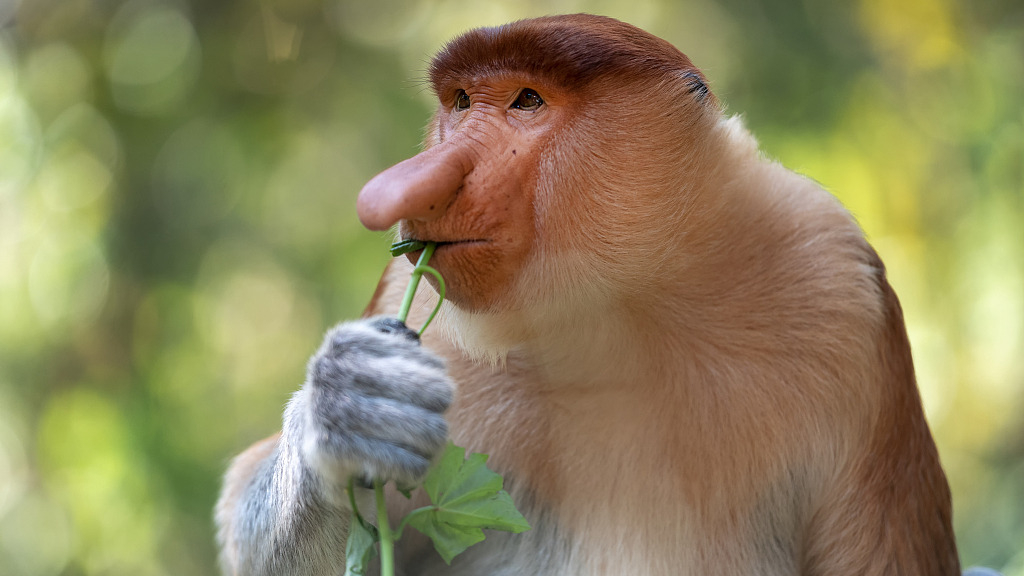
A male proboscis monkey enjoys leaves. /VCG Photo
A male proboscis monkey enjoys leaves. /VCG Photo
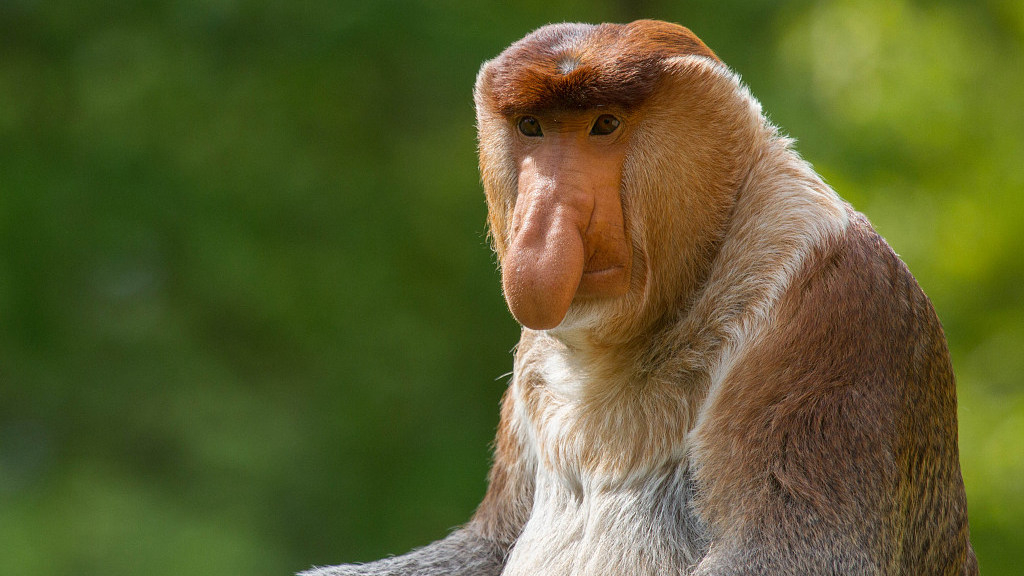
Male proboscis monkeys have the biggest noses of all primates. /VCG Photo
Male proboscis monkeys have the biggest noses of all primates. /VCG Photo
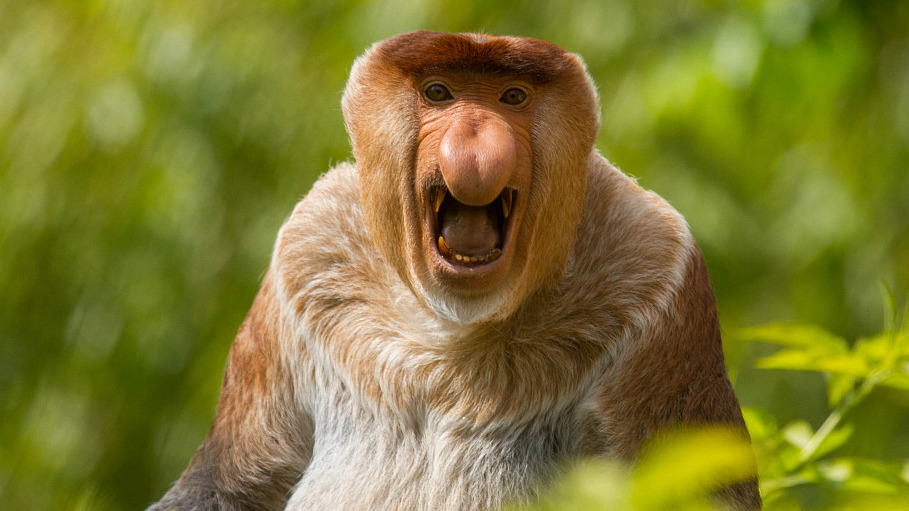
A male howls, showing its sharp teeth. /VCG Photo
A male howls, showing its sharp teeth. /VCG Photo

A group of five proboscis monkeys rest on a branch. /VCG Photo
A group of five proboscis monkeys rest on a branch. /VCG Photo
The population of proboscis monkey has decreased by more than 50 percent by 2008 mainly due to deforestation. The IUCN Red List of Threatened Species has listed it as Endangered.
(Cover image via VCG, designed by CGTN's Li Yueyun.)
(If you want to contribute and have specific expertise, please contact us at nature@cgtn.com)